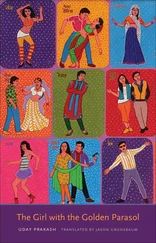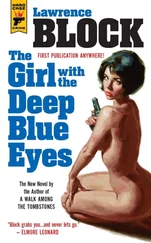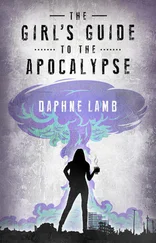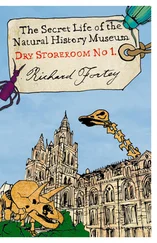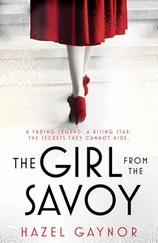But at the same time, our dramas were real, and our desire to escape them was also real. We hung around in a little gang that summer: me, Michele, and a group of boys who could ping-pong back and forth between being our pals and our love interests in a matter of hours. Our parents were at work, and none of us went to camp. (My one-week experiment with camp ended when I begged, and was permitted, to come home. I hated the girly-girls, hated making lanyards, and the only thing I remember enjoying there was liberating the poor box turtle a bunch of kids had caught and stuck in a cage—my final defiance against the system.) Mostly we hung out in the parks, playing ball and getting high; the kid who scored some beer or weed was always the most popular. Getting in trouble was our hobby. Nothing major (I saved that for the next summer), but we worked on creating just enough mayhem to piss people off. I don’t think any of us acted out because we were “damaged” by our traumas; we were just young teenagers on the prowl. When we went anywhere we always walked four or five abreast in the street, never on the sidewalk. Not that we were looking to annoy people, though there was that; mostly it was because we didn’t want to have any of us have to walk behind the other and be left out of the conversation. We were pack animals.
When we got boyfriends, there was endless scheming over how and when we would see them. When we didn’t have boyfriends, we were on the prowl. Everywhere we went—Hershey Park, out for dinner with my dad, the local ice show—we were scanning the place for boys. (A word of advice to today’s teenagers: Ice Capades is generally not the best place to meet boys… unless you are a boy.) Innocent moments could turn sexual in a heartbeat. One moment we were swimming with a neighborhood boy named Tom. The next moment he’d pulled out his penis and was proudly showing it to me. I don’t remember why. I probably asked to see it. At that point, you didn’t really need much pretext for events like that.
John continued to play the part of my main squeeze. My only goals in life at that point were to listen to Aerosmith, stay a little bit numb at all times, and make out with John. We had a poolroom in our house and a stereo system, an ideal gathering place for our gang. (However, for some reason, it was where my father stored his collection of antique glassware—how excited would he be about a bunch of teenagers playing eight-ball around his Lalique?)
My jazz-loving father (his sound track was Miles and Coltrane) noticed that his daughter was going off the rails, so he began instituting rules about how and when I saw John. No kissing on the front porch—and absolutely no being alone in a room together. For this reason, I think we managed to have sex once, maybe twice the whole summer. I was furious.
I think my heightened interest in sex was a reaction to the rape. My reasoning went like this: If I had had to put up with a creepy old man taking what he wanted from me, why couldn’t I give freely what I had to give to someone I loved? My body, I thought. Mine . Of course, I was about as likely to have a mature relationship with someone as I was to win an Oscar. Sex at that age wasn’t about connecting with another human being; it wasn’t even about orgasms (at least not for the girls—all the manuals were telling us it was our right to have them, but try telling that to a fourteen-year-old boy). And if you had sex once or twice, it wasn’t something you necessarily continued to have. It was more like this toll you paid to cross the bridge to adulthood.
Nevertheless, I was determined to control my own life, and having sex was an important part of this control. There were the usual buckets of teenage rebellion, of course. But there was something else. I realize that many women who’ve been raped take a long time before they want to be touched again. My attitude was different. I think I wanted to replace a dark, chaotic experience with something pleasurable and normal—and within my control. John was the “man”—or boy—for the job: we were as in love as you could be at fourteen or fifteen, and he made me feel adored and desired and good enough. And oh, how I needed that.
Sure, there were times when I thought of what happened, times when it snuck into my consciousness. But I didn’t want to remember. I didn’t want to be damaged.
And here’s the thing: Back then, I didn’t think I was. Not by the rape, anyway. It seemed the entire world was telling me I was either his little slut or his pathetic victim. I was neither. Why did everyone want me to be one or the other?
Of course, within that wistful hope for normalcy there was a great deal of denial and dopey behavior. Before I ever became sexually active my mother had taken me aside and given me some sort of spermicidal cream, which I used the one time I had sex with Steve in California. So I was cautious and sensible enough there, even at thirteen. But then there was Polanski, and then York, and I didn’t bring protection with me. (And if you think in 1977 the average fourteen-year-old boy was thinking of using a condom… please.) So it was perhaps a blessing my father at least put obstacles in my path. Things could have been a lot worse.
But that summer all I remember is the sense of relief that I was not in the thick of it. I had this vague sense of a storm gathering back in California without me. I wrote in my diary: “If the publicity gets too bad maybe I could stay here. Maybe they won’t be able to find me.”
• • •
I wasn’t wrong about the “gathering storm.” While I was being a brat in York, all the parties were getting ready for Polanski’s trial in Southern California. Despite the overwhelming evidence, it was impossible at that point to know which way a trial would go. On the one hand, the defense had done a really good job rallying support from the Hollywood community, spreading lies, and using the press to discredit me. On the other, Polanski had many of his own impending troubles. Shortly into the proceedings in mid-April, Polanski, with the judge’s consent, had retreated to his home in London to escape the press (I wonder if a noncelebrity would be given this professional courtesy). Unbeknownst to us at the time—and something that would have undoubtedly come out at trial—the magazine that Polanski was allegedly doing the photo shoot for, Vogue Hommes (not Vogue Paris as we had always believed), was essentially saying to him: Photo shoot? What photo shoot?
In Polanski’s version, recorded in his autobiography:
When I tried to call [ Vogue Hommes editor Gerald] Azaria—the same Azaria who had begged me for an interview and urged me to undertake the layout that had led to my troubles—he refused to come to the phone. I went to see [ Vogue publisher] Robert Caille and explained how essential it was for Azaria to testify that I’d been working on a bona fide assignment. After hemming and hawing, Caille finally said, “He can’t do that. You had no formal, written agreement.” I certainly didn’t, but then, I hadn’t even had one for the Vogue Christmas issue until it was almost on the newsstands. I said everyone in Vogue knew I’d been offered the assignment.
“Look,” said Caille, “we’ve already been questioned by a man from Interpol. He came to ask about your assignment. We said we knew nothing about it.”
I felt betrayed.
By the time Polanski published this, Caille had died, so we may never know what really happened. It’s entirely possibly he did have an assignment, and the editor at Vogues Hommes was too afraid to stand by it, for fear of being connected to the scandal. But it’s safe to say that the inability to produce any real assignment wouldn’t look good to an American jury.
Читать дальше


